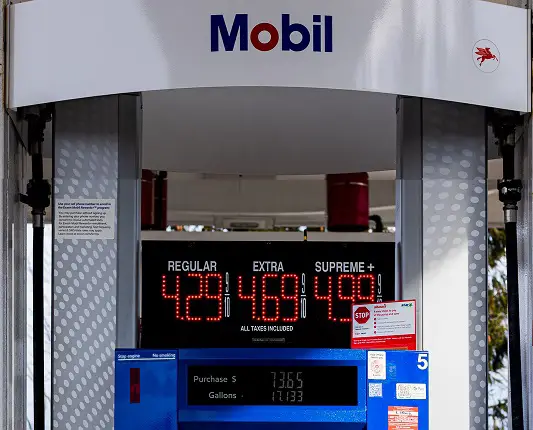Inflation for May came in at a 40 year high, heightening fears among investors of the Federal Reserve beginning a much more aggressive policy of monetary tightening, and a more distant fear of a possible recessionary risk later on.
The Consumer Price Index rose 8.6% year over year in a broad advance. It beat all estimates, rising 1% from the previous month. Shelter, food, and gas led the increases.
Core CPI which removes food and energy due to their volatility, also beat estimates and went up 0.6% from the month before, and was up 6% year over year.
Skyrocketing gas prices combined with ever increasing food and shelter costs are straining Americans’ wallets, and this almost certainly means the Fed will begin to raise interest rates even higher. That in turn raises the risk we may enter a recession, probably sometime next year, and that will inevitably spook investors going forward.
Sal Guatieri, senior economist at BMO Capital Markets, said, “There’s little respite from four-decade high inflation until energy and food costs simmer down and excess demand pressures abate in response to tighter monetary policy. The Fed might still raise policy rates ‘just’ 50 bps next week, but it could easily ratchet up the pace beyond then if inflation keeps surprising to the high side.”
Looking at the data closer, Energy prices climbed the most since 2005, at 34.6% from a year earlier, driven by an almost 49% hike in gasoline prices. So far in June gas prices have continued to rise, indicating this may not have been a peak, and the Fed will feel even more pressure to raise rates as time goes on.
Grocery prices were up the most since 1979 at 11.9% from a year ago. Primary residence rent was up the most since 1987, at 5.2% from a year ago.
In addition there are other factors that may make the situation even worse as time goes on. As Russia’s war in Ukraine progresses, there is a risk of even steeper sanctions placing even more limits on Russian energy reaching the world markets, driving the price of energy even higher. West coast dockworkers face an upcoming expiring contract which could lead to a slowdown in imported goods being delivered. And China has just begun to lockdown Shanghai over a new COVID outbreak, threatening to further impact supply chains. All of that could threaten to increase prices even more as time goes on.
Wells Fargo & Co. economists Sarah House and Michael Pugliese said, “Tighter monetary policy will not help much with surging global commodity prices or structural changes in the way people spend and live in the post-pandemic economy.”
In addition, Inflation-adjusted average hourly earnings fell in May by 3% from the year prior. That is killing consumer sentiment which reached the lowest point on record in June, as inflation expectations rose, according to data from the University of Michigan.
Furniture declined, however apparel continued to climb. Airfares rose 12.6%, up the most on a yearly basis since 1980. Hotel stays were up 22.2% annually. Shelter costs were up the most since 2004 at 0.6% for the month and 5.5% for the year, the most since 1991. Used cars rose 1.8% and new vehicles rose 1%.
Consumer spending has remained strong, fueled by savings and credit. The main fear is if the Fed raises rates too far, it will impact spending.
The timing of this will spell trouble for a 2024 campaign by President Joe Biden, who is already suffering from low poll numbers in these relatively calm economic times. If the recession begins later next year, and lasts for 12-18 months, it would put the country into an election cycle while in an economic recession, a condition this White House would almost assuredly want to avoid.


